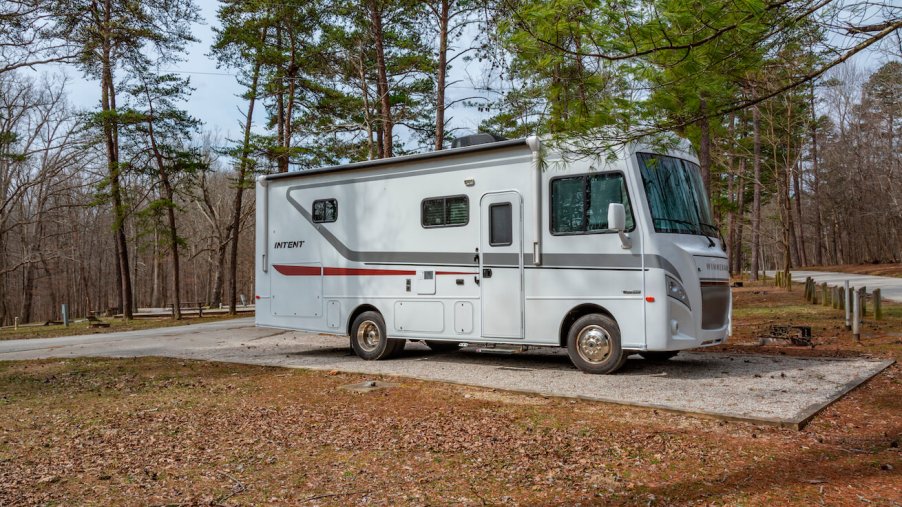
1 Thing Every Single New RV Owner Needs to Do Before Hitting the Road
RVs come in two general styles; the type your drive and the type you tow behind a truck or large SUV. While the wide variety of available RVs includes a model to fit into almost every budget, the most critical RV ownership task is learning to operate the camper you’ve chosen. Let’s look at 11 things every RV owner should know about driving or towing, including the most critical aspect.
What should every RV owner know about driving or towing an RV?
Watching an experienced RV owner glide along freeways and maneuver their rigs around city streets often belies the complexities of operating an RV. Pulling in for fuel, for example, requires an RV owner to assess the station’s layout, the position of other vehicles, and any access issues before committing to its use. While that may sound daunting, following these tips from Camper Report will ease your mind and make your first RV adventure more enjoyable.
- Be mindful of the tail swing. RVs often have considerable length behind the rear wheels. When turning, the front of the RV goes in the direction you’re turning but as the vehicle pivots on the rear wheels, the RV’s tail swings in the opposite direction.
- Keep a safe following distance. RV owners can keep a safe following distance by counting at least four to six seconds between them and the vehicle in front.
- Know your braking limits. If you have to brake suddenly, it’s good to know your limits to plan ahead. Try to continuously develop alternate plans in case someone pulls out into your path or you encounter debris on the roadway without enough room to stop.
- Drive in the far right lane. Driving in the right-hand lane provides a better view behind you from the driver’s side mirror. In most cases, it also allows access to the shoulder in an emergency.
- Slow down – This applies to your miles-per-hour and your attitude. Drive slower, expect the trip to take longer, and enjoy the scenery. Driving slower and keeping to the right allows faster drivers to pass safely.
- Drive with courtesy. Safely moving over a lane to allow merging drivers onto a highway is courteous. Also, stopping short of a stop light to let someone out of a parking lot and signaling your intended turns early lessens the stress levels of those around you.
- Understand your RV’s dimensions. Know your overall height, width, and length, and pay attention to any signage that indicates your RV may not fit.
- Avoid driving your RV when tired. Amid the excitement of getting to a bucket list destination or even a weekend trip, it’s easy to prioritize getting there over being well-rested. To avoid tired driving, begin preparing for the trip a day earlier and get a full night’s sleep before departure day. Also, break any drive day over six hours into multiple days by following the rule of three:
- Drive no more than three hours between breaks
- Drive no more than 300 miles in a day
- Arrive at a campsite no later than 3:00 p.m.
- Consider the weather along your route. There may be calm winds and sunny skies where you are and at your destination, but inclement weather or high winds along the way could end your trip before you get there.
- Adjust the RV mirrors. Sit in the driver’s seat and get comfortable. You should see your desired rear mirror view clearly. If not, adjust your mirrors, not your body.
- Practice driving your RV before hitting the open road. Driving practice is the most important aspect RV drivers should consider before taking a trip. Drivers can practice turning, anticipating tail swing, and backing into tight spots in a large empty parking lot with a few cardboard boxes or laundry baskets. However, there are other ways to gain experience behind the RV wheel.
How can RV owners practice driving an RV before buying one?
The Dyrt recommends renting an RV before buying. Renting allows getting comfortable with a smaller RV before moving to a larger model. You could also try different styles, from drivable units to pull-behind trailers. Doing this before becoming an RV owner will set you up for success.
Other ways to learn to drive an RV
While an adventurous spirit and do-it-yourself attitude are handy for the average RV owner, learning to drive a house on wheels is a daunting first step for most people. So instead of being on your own for your first experience behind the wheel, some organizations offer personalized, in-depth RV driver training.
For example, RV Driving School offers eight hours of one-on-one training split over two days, allowing your partner to “ride along” and observe without driving. Another option includes the “Two Person Private Lesson,” with 12 hours of instruction split over two days. The training could pay for itself in reduced insurance costs depending on your carrier.
We encourage you to practice driving your rig in a safe place to get familiar with its operation before taking off to explore the country. Leave us a comment to tell us where you’ll go first or next.



